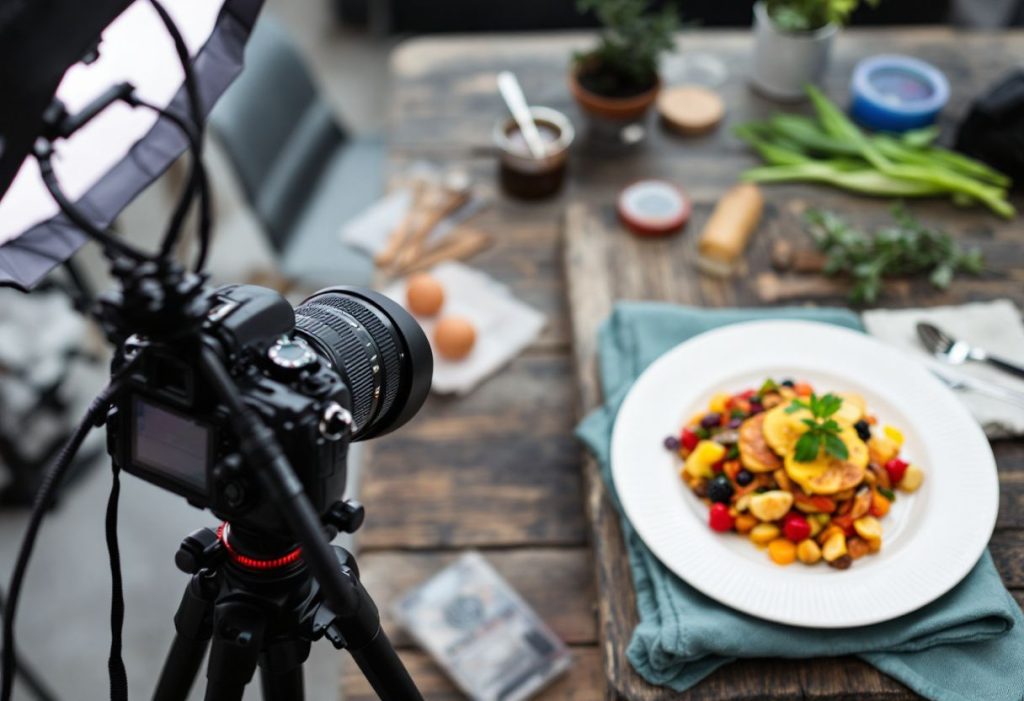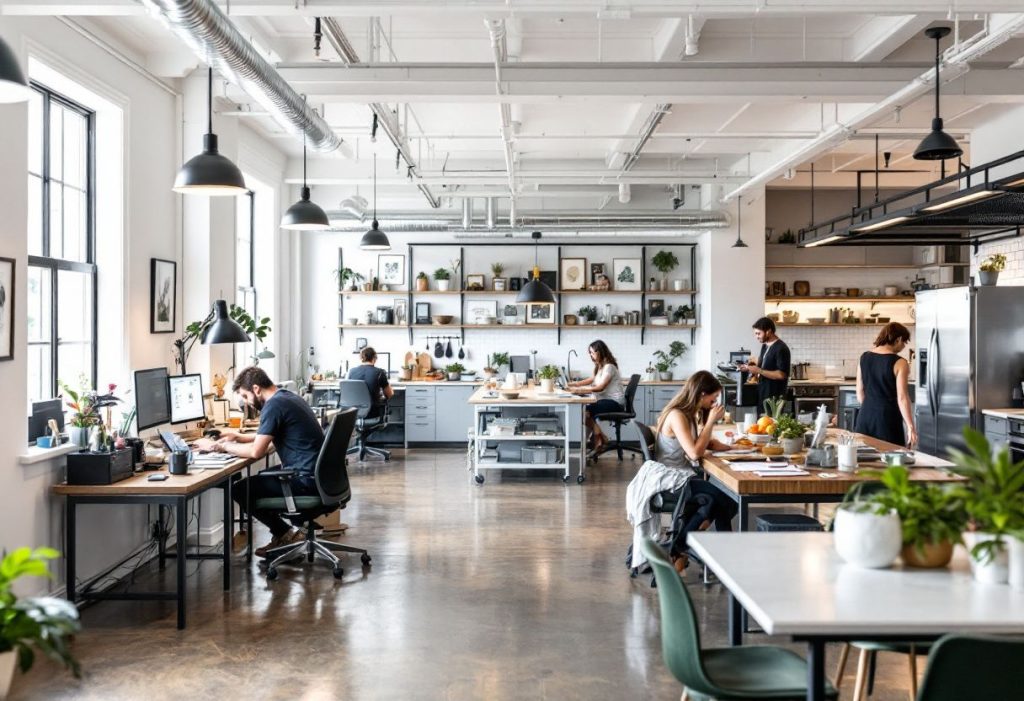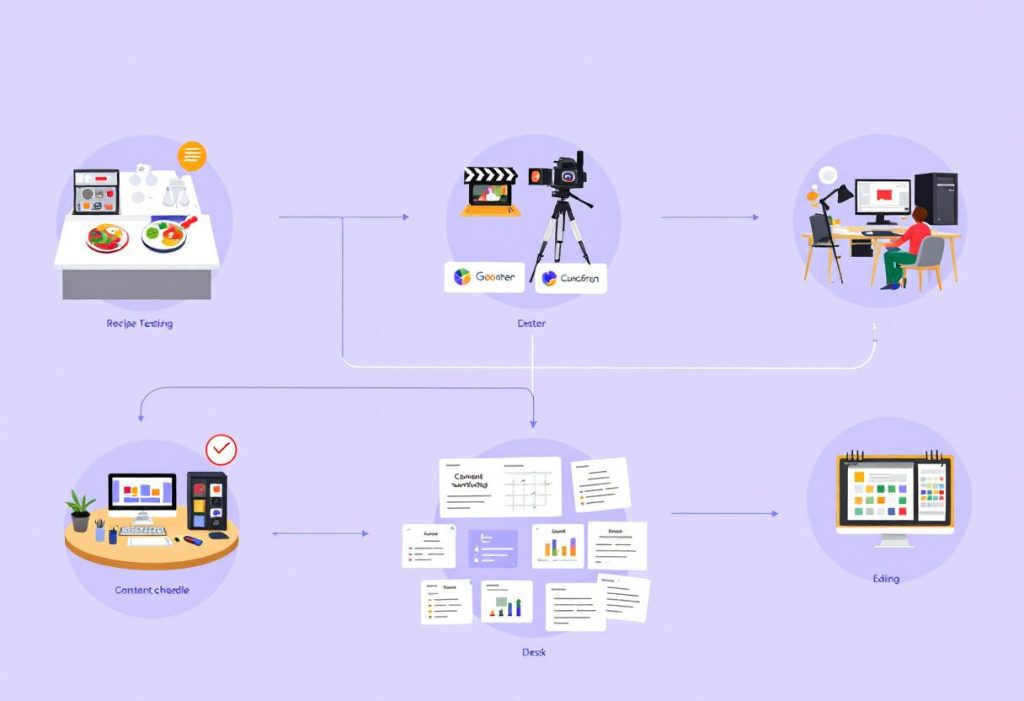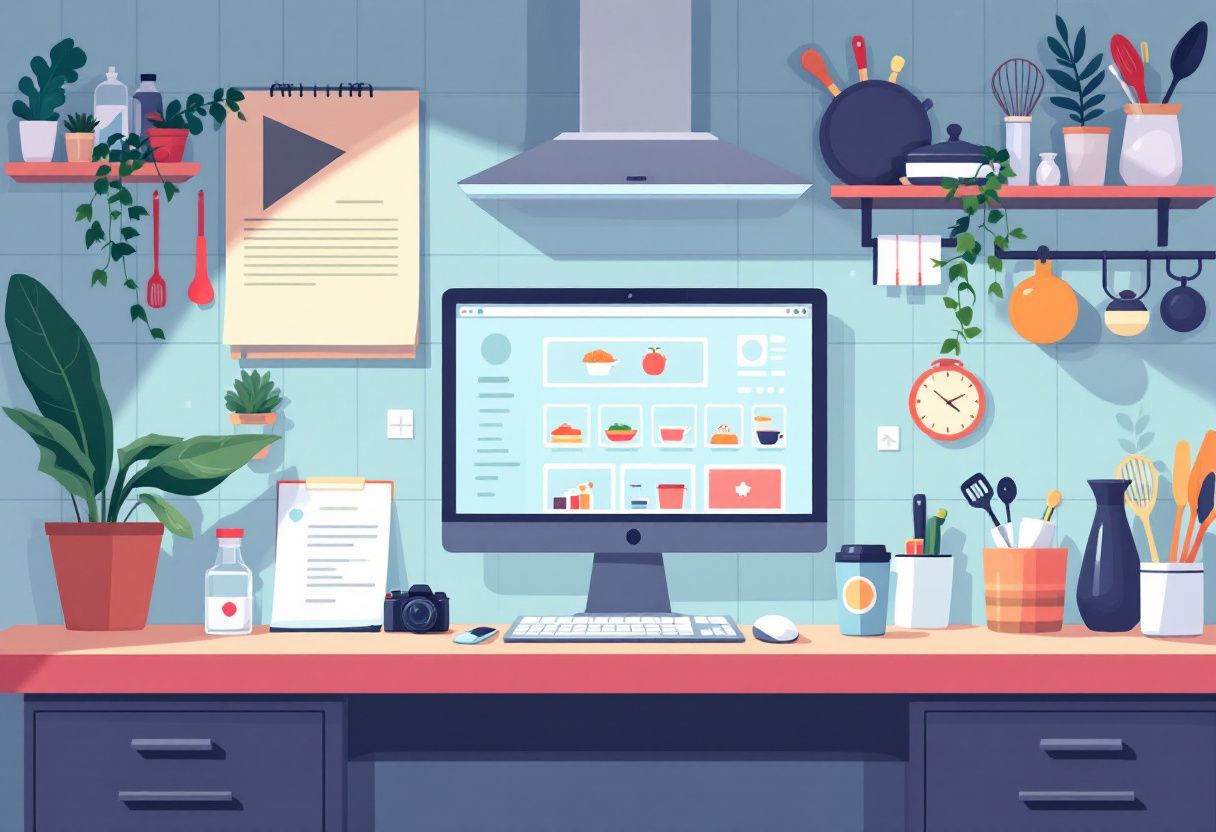Setting Up Your Food Blog as a Business: A Complete Financial Guide
Introduction to Food Blog Business Fundamentals
Transforming your culinary passion into a profitable food blog requires more than just great recipes and stunning food photography. Today’s successful food bloggers operate sophisticated digital businesses that generate significant income through multiple revenue streams. This guide will help you build a solid business foundation for your food blog.
Initial Investment and Essential Tools
Starting a professional food blog requires strategic investment in both digital and culinary tools. While it’s possible to start on a budget, investing in quality equipment and platforms will significantly impact your blog’s growth potential.
Digital Infrastructure Investment
Your blog’s digital foundation requires careful consideration. A professional-grade website hosting service typically costs between $100-300 annually, but this investment is crucial for reliable performance and growth capacity. Choose a hosting provider that specializes in WordPress food blogs, offering features like recipe plugins and high-quality image storage.
Premium theme selection is equally important, with professional food blog themes ranging from $50-150. Look for themes specifically designed for food blogs, offering features like recipe card formatting, nutrition information display, and mobile-responsive layouts.
Essential Kitchen Equipment
Quality food photography requires proper equipment. Start with a basic setup including:
- A DSLR or mirrorless camera ($600-1,000)
- 50mm prime lens for food photography ($200-400)
- Basic lighting kit ($200-300)
- Props and backgrounds ($300-500)
Your kitchen setup should include tools specifically for content creation:
- Quality cookware that photographs well ($500-800)
- Professional cutting boards and utensils ($200-300)
- Garnishing tools and plating equipment ($100-200)
- Food styling kits ($150-250)
Business Structure and Legal Requirements
Establishing proper business structure protects your personal assets and legitimizes your food blog as a business entity. Most food bloggers start as sole proprietors but should consider transitioning to an LLC as revenue grows.
Legal Documentation
Protect your business with essential legal documents:
- Website terms and conditions
- Privacy policy
- Disclosure statements for affiliate marketing
- Recipe sharing policies
- Copyright notices
Professional legal templates for food bloggers typically cost $300-500 but provide crucial protection for your growing business. Consider working with a lawyer who specializes in digital food businesses for customized documentation.
Financial Management Systems
Implementing proper financial systems from the start ensures smooth business operations and accurate tax reporting. Set up separate business banking accounts and invest in accounting software designed for digital content creators.
Accounting Setup
Choose accounting software that handles multiple revenue streams and digital transactions. Popular options like QuickBooks or FreshBooks cost $25-50 monthly but provide essential features for tracking:
- Recipe development expenses
- Photography equipment depreciation
- Website maintenance costs
- Marketing investments
- Affiliate income tracking
Content Monetization Foundation
Building multiple revenue streams requires proper setup and planning. Start with these essential monetization channels:
Ad Network Requirements
Prepare your blog for premium ad networks like Mediavine or AdThrive. These networks typically require:
- Minimum monthly pageviews (25,000-50,000)
- Quality original content
- Professional website design
- Mobile-optimized layout
- Fast loading speeds
Investing in site optimization tools ($200-400 annually) helps achieve these requirements faster.
Affiliate Marketing Infrastructure
Set up systems for affiliate marketing success:
- Link management tools ($100-200 annually)
- Product photography equipment
- Testing and review processes
- Disclosure compliance systems
- Performance tracking tools
Growth Investment Strategy
Allocate your initial investment wisely across different areas of your food blog business. A typical startup budget might look like this:
First Year Investment Breakdown
- Website Development: $1,500-2,000
- Photography Equipment: $1,500-2,500
- Kitchen Equipment: $1,000-1,500
- Legal/Business Setup: $500-1,000
- Marketing/SEO Tools: $1,000-1,500
- Education/Training: $500-1,000
Setting Growth Metrics
Establish clear metrics to track your blog’s progress and guide future investments. Focus on:
- Monthly page views growth
- Email list subscription rates
- Social media engagement
- Recipe page performance
- Monetization per visitor
Advanced Monetization Strategies for Food Bloggers: Maximizing Your Revenue

Diversifying Revenue Streams
Successful food bloggers don’t rely on a single income source. Building multiple revenue streams creates financial stability and growth opportunities. Today’s top food bloggers often generate income from six or more different sources, creating a robust business model that withstands market changes.
Premium Ad Network Optimization
Moving beyond basic display advertising requires strategic planning and content optimization. Premium networks like Mediavine and AdThrive can generate significant revenue, often $15-30 per 1,000 pageviews (RPM) for food content. Some successful food bloggers report RPMs of $40+ during holiday seasons.
Sponsored Content Strategies
Developing profitable brand partnerships requires more than just accepting any sponsorship offer. Top food bloggers carefully select partnerships that align with their brand and audience needs.
Typical sponsored content rates for food bloggers:
- Recipe development and photography: $1,500-3,000
- Instagram posts: $500-1,500 per post
- Recipe video creation: $2,000-5,000
- Story series: $750-2,000
- Long-term ambassadorships: $5,000-20,000+ monthly
Product Development and Sales
Digital Product Creation
Creating digital products provides passive income potential while serving your audience’s needs. Successful digital products include:
- Meal planning systems ($27-47)
- Recipe ebooks ($17-37)
- Food photography guides ($97-197)
- Cooking technique courses ($197-997)
- Kitchen organization planners ($27-47)
Physical Product Development
Many successful food bloggers expand into physical products. Consider these proven options:
- Branded cooking tools
- Specialty ingredients
- Meal planning journals
- Kitchen organization tools
- Cooking kits
Advanced Affiliate Marketing
Creating successful affiliate marketing campaigns requires strategic content development. Focus on:
Product Review Strategy
- In-depth testing procedures
- Comparison content
- Tutorial videos
- Buying guides
- Seasonal promotions
Successful food bloggers often generate $2,000-5,000 monthly through strategic affiliate marketing, with some reaching $10,000+ during peak seasons.
Membership and Community Building
Creating subscription-based communities can generate reliable monthly income. Consider offering:
Premium Membership Benefits
- Exclusive recipes
- Live cooking classes
- Private community access
- Personal coaching
- Early content access
Typical membership pricing:
- Basic tier: $9.99/month
- Premium tier: $27/month
- VIP access: $97/month
Video Content Monetization
Expanding into video creates additional revenue opportunities:
YouTube Revenue Optimization
- Ad revenue: $2-5 per 1,000 views
- Channel memberships
- Super Chat donations
- Merchandise shelf
- Premium sponsorships
Video Sponsorship Rates
- Recipe videos: $2,000-5,000
- Cooking tutorials: $1,500-3,000
- Kitchen tours: $1,000-2,500
- Live demonstrations: $500-1,500/hour
Advanced Partnership Opportunities
Building strategic partnerships can significantly increase revenue:
Brand Collaboration Types
- Product development consulting
- Recipe development programs
- Brand ambassador roles
- Speaking engagements
- Workshop facilitation
Rate Structure Development
- Hourly consulting: $150-300
- Project-based work: $2,000-10,000
- Retainer agreements: $3,000-8,000 monthly
- Speaking fees: $2,500-10,000 per event
Intellectual Property Monetization
Creating and protecting intellectual property assets provides long-term value:
Copyright Protection
- Recipe collections
- Photography
- Video content
- Branded materials
- Teaching materials
Scaling Your Food Blog Empire: Advanced Growth Strategies

Building a Sustainable Food Media Business
Transforming your food blog into a thriving media business requires strategic planning and systematic growth. This transition moves your operation from a personal blog to a scalable enterprise that can operate beyond your individual capacity.
Team Building and Delegation
Essential Team Positions
Building an effective team starts with identifying crucial roles:
Content Production Team:
- Recipe Developers ($25-50/hour)
- Food Photographers ($50-150/hour)
- Video Producers ($50-75/hour)
- Content Writers ($30-50/hour)
- Social Media Managers ($3,000-5,000/month)
Business Operations:
- Business Manager ($4,000-7,000/month)
- Ad Operations Specialist ($3,500-5,500/month)
- Technical SEO Manager ($4,000-6,000/month)
- Community Manager ($2,500-4,000/month)
Content Production Systems

Developing systematic content production processes ensures consistent quality and output. A professional food blog operation typically requires:
Production Facilities
- Test Kitchen Setup ($15,000-30,000)
- Photography Studio ($10,000-20,000)
- Video Production Area ($20,000-40,000)
- Content Management Office ($5,000-10,000)
Brand Expansion Strategies
Expanding your brand requires careful planning and strategic investment in various verticals:
Product Line Development
- Cookbook Publishing ($20,000-50,000 investment)
- Kitchen Product Line ($50,000-100,000 initial investment)
- Mobile App Development ($30,000-100,000)
- Online Cooking School ($15,000-40,000 setup)
International Market Expansion
Reaching international audiences requires specific considerations:
Global Content Strategy
- Content Translation Services ($0.10-0.20 per word)
- International SEO ($2,000-5,000/month)
- Regional Recipe Adaptation
- Cultural Consultation ($100-200/hour)
Advanced Technology Integration
Investing in technology infrastructure supports scalable growth:
Essential Technology Stack
- Custom Website Development ($20,000-50,000)
- Recipe Plugin Customization ($5,000-15,000)
- Analytics Suite ($500-1,000/month)
- Automation Tools ($300-800/month)
- Content Distribution Platforms ($200-500/month)
Revenue Scaling Strategies
Scaling revenue requires diversification and optimization:
Revenue Stream Expansion
- Online Courses ($50,000-100,000 annual potential)
- Licensing Deals ($10,000-50,000 per deal)
- Restaurant Partnerships ($5,000-20,000 monthly)
- Subscription Services ($10,000-30,000 monthly)
Brand Protection and Legal Structure
As your food blog empire grows, protecting your assets becomes crucial:
Legal Infrastructure
- Trademark Registration ($5,000-10,000)
- International IP Protection ($10,000-20,000)
- Contract Templates ($3,000-5,000)
- Legal Retainer ($2,000-5,000/month)
Exit Strategy Planning
Planning for eventual exit options ensures long-term value:
Valuation Metrics
- Revenue Multiple: 3-5x annual revenue
- Brand Value Assessment
- Audience Valuation
- Technology Asset Value
- Content Library Worth
Future Growth Planning
Sustainable growth requires continuous evolution:
Growth Opportunities
- Virtual Reality Cooking Experiences
- AI-Powered Recipe Development
- Smart Kitchen Integration
- International Brand Licensing
- Educational Institution Partnerships
